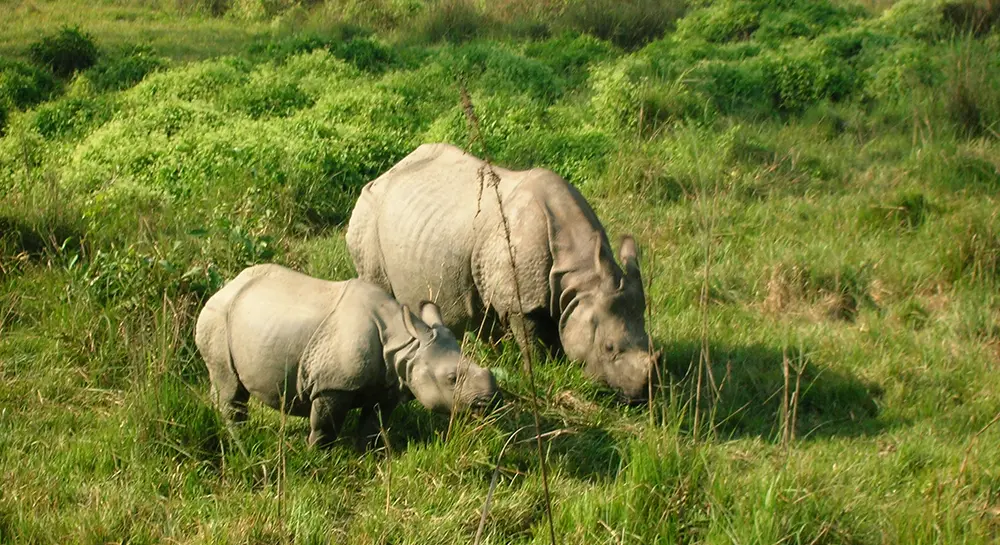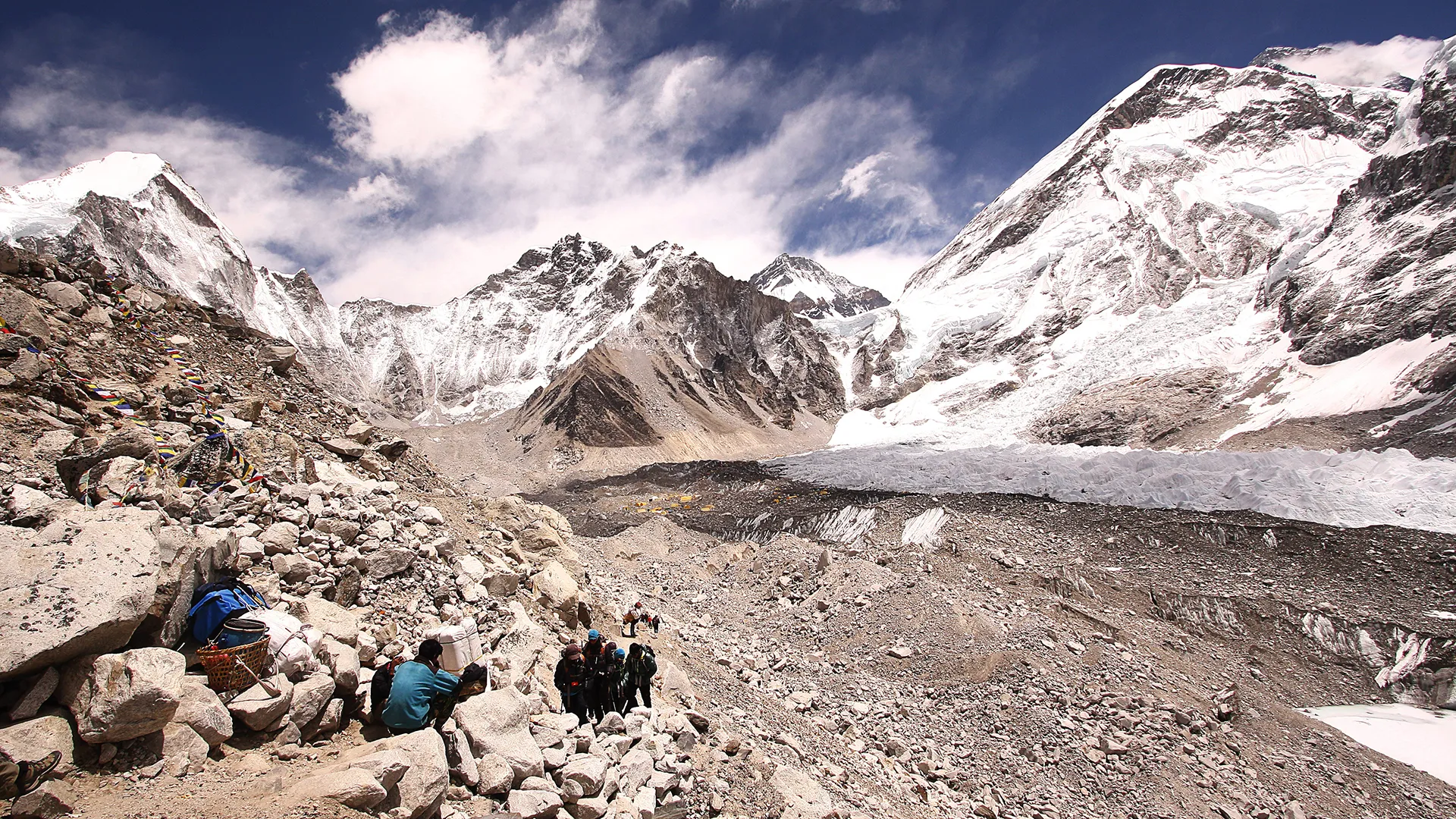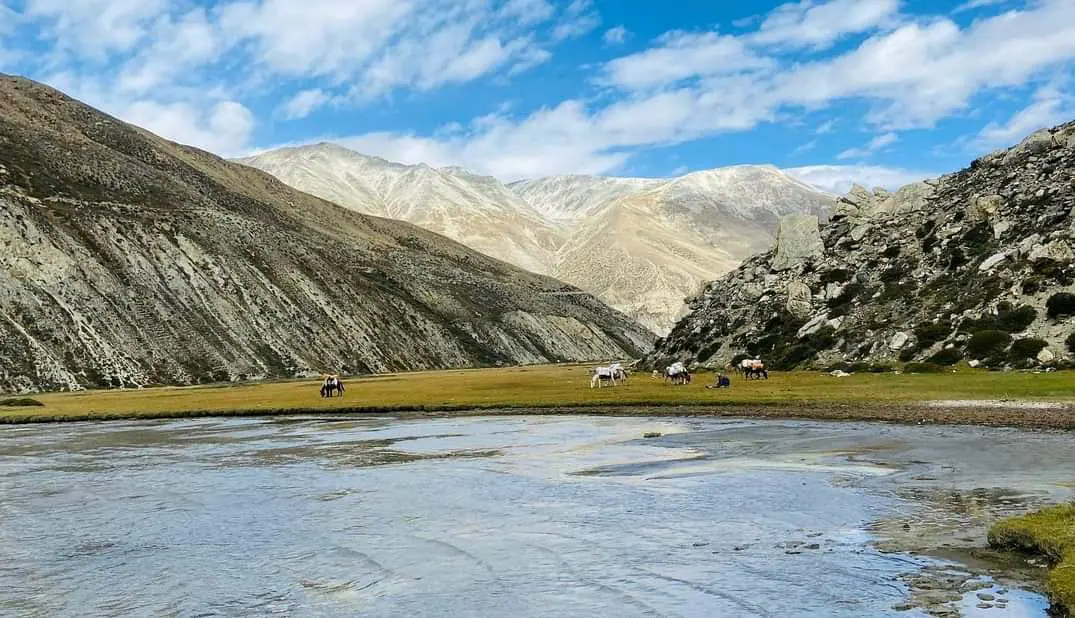Share this Article
Introduction Nepal, a country known for its towering mountains and timeless spirituality, is equally blessed with rich lowland jungles teeming with life. The southern belt of Nepal — the Terai — is a world apart from the icy Himalayas. Here, the warm, humid air nurtures lush forests, winding rivers, and fertile grasslands that are home to some of South Asia’s most spectacular wildlife. Among the many protected areas scattered across this region, Chitwan National Park and Bardia National Park stand out as Nepal’s twin jewels of biodiversity and conservation.
Both parks tell powerful stories — of nature’s abundance, human coexistence, and the country’s extraordinary commitment to preserving its ecological heritage. While Chitwan has long been Nepal’s most famous wildlife destination, attracting tourists from across the globe, Bardia remains a quieter, wilder, and more untouched counterpart — a place where the spirit of the jungle still reigns supreme.
Together, these parks represent more than just protected landscapes. They are living ecosystems — dynamic, intricate webs of life that sustain not only plants and animals but also human communities that depend on them. Their biodiversity is a reminder that Nepal’s identity is deeply intertwined with nature, and their continued preservation offers hope for the planet’s environmental future.
Chitwan National Park: The Gateway to the Wild
Established in 1973, Chitwan National Park was Nepal’s first national park and became a UNESCO World Heritage Site in 1984. Spanning over 952 square kilometers, it is located in the subtropical lowlands of south-central Nepal, in the districts of Chitwan, Nawalpur, Parsa, and Makwanpur. The name Chitwan literally means “the heart of the jungle,” and true to its name, the park pulsates with life.
Chitwan’s landscapes are incredibly diverse — ranging from dense Sal forests (Shorea robusta) to vast riverine grasslands, oxbow lakes, and sandy riverbanks along the Rapti, Narayani, and Reu rivers. This ecological diversity provides habitats for a stunning array of species. It’s one of the last strongholds of the one-horned rhinoceros, home to around 700 individuals, and one of the best places in Asia to spot the Bengal tiger in its natural habitat.
Beyond the “Big Two,” Chitwan shelters sloth bears, gaur (wild bison), leopards, wild elephants, sambar deer, and spotted deer. The park’s rivers also harbor mugger crocodiles, gharial crocodiles, and even the elusive Gangetic dolphin — a rare freshwater species now endangered across South Asia.
What makes Chitwan unique is not only its biodiversity but also its accessibility. Just a few hours’ drive from Kathmandu or Pokhara, visitors can step into a world that feels entirely removed from urban life. The park’s buffer zones are dotted with eco-lodges and community-run homestays that offer authentic jungle experiences — from canoe rides at sunrise to guided safaris through the Sal forests.
Bardia National Park: The Untamed Wilderness
Far to the west of Chitwan lies Bardia National Park, an equally magnificent yet less-explored sanctuary. Covering about 968 square kilometers, Bardia is Nepal’s largest and most remote national park, located in Bardiya District of Lumbini Province. Compared to Chitwan, Bardia remains wilder, less crowded, and more natural — making it ideal for those seeking a raw encounter with the jungle.
Bardia’s landscape is dominated by sal forests, riverine woodlands, and wide grasslands, interlaced by the Karnali and Babai Rivers. These rivers are lifelines for the park’s biodiversity, supporting everything from fish and amphibians to crocodiles, turtles, and aquatic birds.
One of Bardia’s biggest conservation successes is the recovery of its Bengal tiger population. Thanks to strong anti-poaching laws and dedicated conservation programs, the park has become one of Nepal’s top tiger habitats. It is estimated that more than 120 tigers now roam the forests of Bardia and surrounding landscapes — a major comeback for a species once critically endangered in the region.
But Bardia’s magic doesn’t end there. The park is also home to wild elephants, rhinoceroses, leopards, swamp deer, and hundreds of bird species. The remote setting means wildlife here behaves more naturally, less accustomed to human presence, allowing visitors to experience the wilderness in its purest form.
The nearby Tharu communities add a rich cultural layer to the experience. These indigenous groups have lived alongside wildlife for generations, mastering traditional knowledge that helps them coexist peacefully with the forest. Their distinctive mud houses, traditional dances, and warm hospitality offer visitors a glimpse into the deep-rooted harmony between people and nature.
A Symphony of Life: Flora and Fauna
The biodiversity of Chitwan and Bardia is extraordinary not only in numbers but also in ecological complexity. Together, they host over 700 species of wildlife, over 60 species of mammals, more than 500 bird species, and hundreds of plant varieties.
The foundation of this biodiversity is the vegetation. Sal trees dominate the landscape, forming dense forests that provide shelter to countless animals. Beneath their canopy grow shrubs, grasses, ferns, orchids, and herbs — many with medicinal properties used in local Ayurvedic practices. The elephant grass that thrives in the parks’ floodplains can grow up to four meters tall, creating ideal cover for rhinos and deer.
The parks’ wetlands and rivers are home to aquatic life such as mahseer fish, softshell turtles, and otters. The presence of gharial crocodiles — known for their long, slender snouts — is a sign of healthy river systems. Gharials are among the world’s most endangered reptiles, and Nepal’s ongoing conservation efforts have helped stabilize their population in recent years.
Birdlife: Wings of Diversity
If mammals are the stars of the jungle, birds are the soul. Both Chitwan and Bardia are a paradise for bird enthusiasts. Chitwan alone boasts over 540 recorded bird species, while Bardia has around 400 species. The variety is astonishing — from giant hornbills and crested serpent eagles to delicate kingfishers and paradise flycatchers.
During the winter months, migratory birds from Siberia, Central Asia, and the Himalayas descend upon the wetlands, turning them into living tapestries of color and movement. Storks, egrets, herons, ducks, and cranes share the skies, while the calls of woodpeckers, warblers, and barbets echo through the forest.
The sight of a great hornbill gliding above the Sal forest canopy or a peacock displaying its feathers at dawn adds an unmatched vibrancy to these landscapes. Birdwatching trails and riverine excursions in both parks offer unforgettable encounters for those who take time to observe the quieter, feathered side of nature.
The Human Connection: Tharu Culture and Coexistence
The story of Chitwan and Bardia’s biodiversity cannot be told without acknowledging the Tharu people, the original inhabitants of the Terai plains. For centuries, they have lived in close harmony with the forest, developing sustainable ways of farming, fishing, and gathering that respect the natural balance.
Even today, their traditional lifestyle demonstrates a deep ecological understanding. Tharu houses are built with natural materials like mud, clay, and grass — keeping them cool in summer and warm in winter. Their diets include forest products and locally grown grains, minimizing external dependence.
As conservation expanded, many Tharu families were relocated from the core zones to buffer areas, but their role in protecting biodiversity continues. Community-based tourism projects near both parks now involve Tharu guides, homestays, and cultural performances that share their heritage with visitors. This model ensures that the local population benefits economically from conservation, strengthening the link between people and nature.
Conservation Efforts and Global Recognition
Both Chitwan and Bardia are international success stories in conservation. Nepal’s commitment to wildlife protection is widely recognized, with the government, the Nepal Army, and local communities working together to fight poaching and habitat destruction.
The National Trust for Nature Conservation (NTNC), along with organizations like the WWF and Zoological Society of London (ZSL), has implemented long-term programs focused on habitat management, species monitoring, and community involvement.
Chitwan’s rhino population, which had fallen to fewer than 100 in the 1960s, has rebounded to over 700 today. Similarly, Bardia’s tiger recovery program has been hailed as a model for Asia. In 2022, Nepal proudly announced that it had doubled its tiger population, fulfilling the global “TX2” goal set at the 2010 St. Petersburg Tiger Summit — a feat achieved by only a handful of nations.
These achievements are not just victories for Nepal but for the entire global conservation community. They prove that when governments, communities, and individuals work together, even the most endangered species can recover.
Challenges Ahead
Despite these successes, both parks face growing challenges. Illegal logging, habitat fragmentation, and climate change pose serious threats to biodiversity. Floods and landslides, worsened by erratic monsoons, can devastate ecosystems. The encroachment of agricultural land and infrastructure development near buffer zones also leads to human-wildlife conflict.
Poaching, though greatly reduced, still remains a concern, especially for high-value species like tigers and rhinos. Moreover, unregulated tourism can create stress on sensitive ecosystems. The balance between economic opportunity and ecological sustainability must be carefully maintained if these parks are to thrive for future generations.
Conservation in the coming decades will depend heavily on education, sustainable policies, and community engagement. Empowering local people to become stewards of their environment — not just beneficiaries — remains the most effective long-term strategy.
The Visitor Experience: A Journey into the Wild
For travelers, Chitwan and Bardia offer some of the most thrilling and immersive wildlife experiences in South Asia. Early-morning safaris through the fog-laden forests bring you face to face with rhinos grazing in the mist, deer cautiously stepping through the grass, and monkeys leaping between branches.
A canoe ride along the Rapti or Karnali River offers quiet moments to observe crocodiles basking on the banks, colorful kingfishers darting across the water, and the rhythmic sounds of the jungle awakening. For the more adventurous, walking safaris and birdwatching expeditions provide opportunities to witness the forest’s subtler beauty — the insects, flowers, and tracks that tell hidden stories.
Unlike many commercialized wildlife destinations, these parks still retain an aura of authenticity. Each rustle in the bushes, each distant roar, reminds you that this is nature in its rawest, most genuine form.
The Global Importance of Nepal’s Biodiversity
Beyond tourism and national pride, the biodiversity of Chitwan and Bardia has immense global ecological importance. These parks are critical for carbon storage, water regulation, and climate stability. They serve as vital habitats within the larger Terai Arc Landscape (TAL), which connects Nepal’s and India’s protected areas, enabling species like tigers and elephants to roam freely across borders.
Their forests act as natural lungs, absorbing carbon dioxide and releasing oxygen. The rivers sustain agriculture downstream, while the ecosystems provide ecosystem services worth millions of dollars annually. Protecting these landscapes is not just an environmental duty — it is an investment in humanity’s collective future.
Conclusion
The jungles of Chitwan and Bardia are more than national parks; they are living symbols of Nepal’s harmony with nature. Within their boundaries, ancient rhythms of life continue to unfold — the trumpet of elephants, the silent glide of a crocodile, the call of a distant peacock. Each sound, each sight, tells a story of resilience, adaptation, and coexistence.
Their biodiversity is a reflection of Nepal’s soul — diverse, enduring, and deeply connected to the earth. As global environmental crises intensify, these sanctuaries stand as proof that conservation and community can go hand in hand.
To protect Chitwan and Bardia is to protect the future — not only for rhinos and tigers but for every living being that depends on a balanced planet. They remind us that while mountains may define Nepal’s geography, it is the jungles of the Terai that define its heartbeat.
Categories:
Travel & Tourism
Tags:
Terai biodiversity
,
Wildlife tourism Nepal
,
Nepali national parks
,
Biodiversity in Nepal







